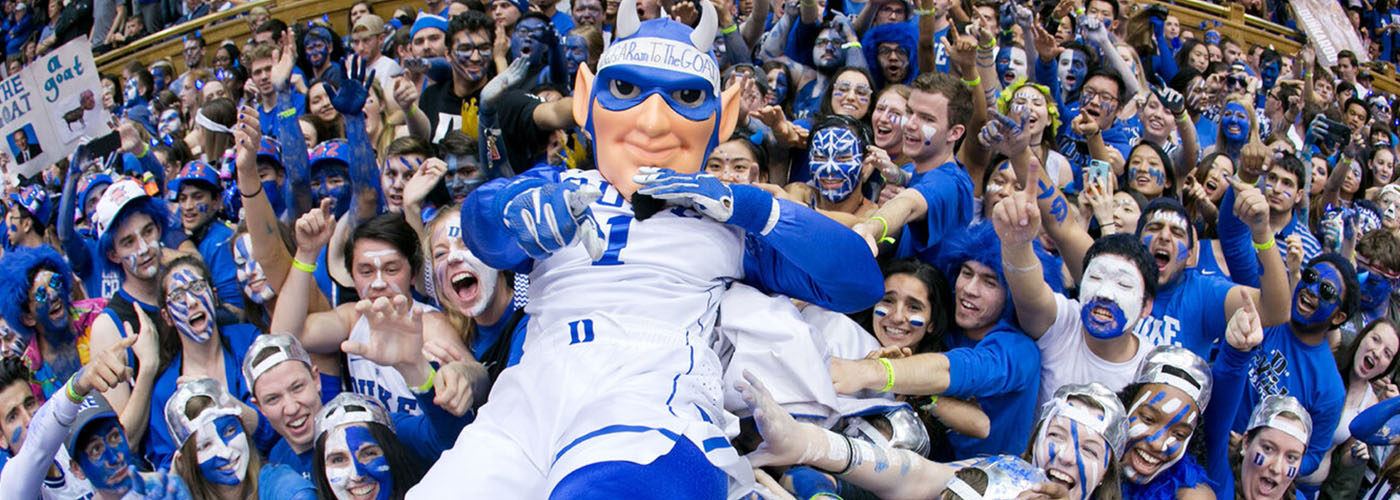The United States is facing a mental health epidemic, one which has been largely ignored by healthcare professionals. No, I’m not talking about the psychological toll of the COVID-19 pandemic, which thankfully has received much-deserved attention. Instead, I’m referring to a disease which, despite affecting millions every year, has yet to be recognized at all by the American Psychiatric Association and for which there is no mention whatsoever in the Diagnostic and Statistical Manual of Mental Disorders. This scourge is called martiomania, though it is known more commonly by its English translation, “March Madness.”
After noticing the resurgence of March Madness in 2022 following relatively mild seasons in 2020 and 2021, I asked my research team to do some digging on this mysterious disease. What follows is their report.
****
Martiomania: from the Greek “Martios” (March) and “mania” (madness or frenzy).
As the name implies, March Madness is subject to a distinctive seasonality, with cases rising exponentially in early March, peaking by the end of the month, and vanishing completely within the first week of April. Classical symptoms include uncontrollable vocal outbursts, mild aggression, mood swings, inability to concentrate on daily tasks, an increase in superstitious behavior, and in many cases, a sudden aversion to a specific title of nobility. Severe cases may involve temporary discoloration of the face and/or chest in bright hues: blue, red, green, and orange being among the most common. Although symptoms last only about one month, those affected by March Madness have a high tendency to relapse year after year, raising the possibility that the disease remains latent in the nervous system between annual symptomatic episodes. The precise triggers for these relapses – and the long-term health consequences of living with this condition – aren’t clear.
Research on March Madness has been limited to date, and very little is known about its causes and mechanisms. Some believe that the disease is contagious, which would imply a viral, bacterial, or perhaps fungal origin. However, investigators have yet to identify any potential microbial culprits, despite the suspicious black growth on the feet of many affected individuals in the vicinity of Chapel Hill, NC. Others have suggested that genetic factors may be responsible, pointing out the recurrence of similar symptoms among members of the same family. Many hypothesize that diet may contribute to risk, as prevalence correlates highly with consumption of Domino’s pizza and Bud Light, though this appears to depend highly on age: the association is not significant for children and adolescents or for adults over age 30. Finally, some posit that environmental factors may play a role, noting that many of the most extreme cases occur in individuals who have recently spent several weeks living outdoors.
What is clear is that March Madness can affect both men and women of any ethnicity and any age, though adults in the 18-26 age bracket seem to be at highest risk for the most severe symptoms. Americans appear to be more susceptible than those outside the United States, as annual case rates in the U.S. dwarf those in the rest of the world. Within the U.S., the hardest-hit regions tend to vary from year to year, but certain perennial hotspots include eastern Kansas, central North Carolina, Kentucky, southern California, and various pockets within the Northeast and Midwest.
Over 1 in 10 Americans suffers from March Madness every year, yet the disease is often difficult to recognize in friends and family because symptoms tend to be episodic, lasting only a few hours at a time. Afflicted individuals may also try to conceal their condition, especially from employers. Further, March Madness is often misdiagnosed as spring fever, which, though it is a common comorbidity and has similar effects on concentration, lacks many of the more superstitious and aggressive behavioral hallmarks of March Madness. For instance, you might notice that a neighbor has been wearing the same pair of socks every day for two weeks or sporting a shirt which clearly hasn’t been washed since the previous year. A co-worker might react to poor product sales with repeated shouts of “airball.” One might begin to express disdain for a particular shade of powder blue… or argue with others about the superiority of pantone 287 over pantone 286… and sign off on emails with the letters G, T, H, and C…
****
At this point, the report descended into incomprehensible babble about devils and goats, which I can only take to mean that even scientists are not immune to this disease. Yes, my research team is just the latest to be upset in the March Madness epidemic. The medical field must open its eyes to this disease. Until then, our only hope is April.





